 I’m really thrilled that the Writers on Location series is proving so popular. Every author’s relationship with place is different and makes for such an interesting story in its own right. That’s especially true of today’s guest: novelist, actor and playwright Jason Hewitt. His World War Two debut The Dynamite Room, one of my Fiction Hot Picks 2014, is partly set in Arctic Norway and here he talks about a research trip which proved successful in a very unusual way! (my mini-review follows):
I’m really thrilled that the Writers on Location series is proving so popular. Every author’s relationship with place is different and makes for such an interesting story in its own right. That’s especially true of today’s guest: novelist, actor and playwright Jason Hewitt. His World War Two debut The Dynamite Room, one of my Fiction Hot Picks 2014, is partly set in Arctic Norway and here he talks about a research trip which proved successful in a very unusual way! (my mini-review follows):
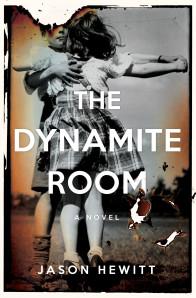
Researching a novel can take you to some unusual places. That’s how in the summer of 2009 I ended up on a flight to Narvik in northern Norway. It’s okay – you can be forgiven if you’ve not heard of Narvik. Today it’s little more than a rather forgotten industrial town nestled 140 miles inside the Arctic that attracts alpine skiers and hikers but not much else. In April 1940 however it was quite a different story.
Narvik is situated on a gulf stream and is the only harbor within the Arctic Circle that doesn’t freeze over and remains open all year. In the early twentieth century navvies built a railroad that linked Narvik to Kiruna in Sweden and its rich iron fields. Whoever controlled the railway line and Narvik could control the flow of iron ore and ship as much as they liked out into the North Sea, ultimately ensuring that they could produce as many planes, tanks and boats as they liked. It was hardly surprising then that Norway, as an access point to the North Sea, and Narvik in particular, became the focal point of attention for both sides.
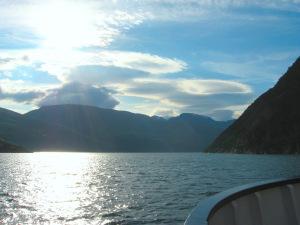
For the first two days I walked aimlessly around the town, not really knowing what I was looking for. Much of it has been rebuilt and it was hard to visualise German troops pushing through the streets, but sitting in the harbor it was easier to imagine German and British destroyers slugging it out, the sound of torpedo blasts and cannons booming around the mountainside.
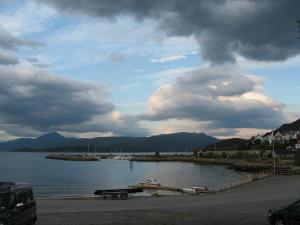
What could go wrong?
The stunning train ride along the Ofoten railway curled around the fjord and I eventually hopped out at a tiny station called Katterat. It was August and surprisingly warm for the Arctic, the sun burning through the trees, and for quite a while I followed a path, jotting down things that I saw and taking random photographs, and imagining my German characters traipsing along the same paths, fighting against a blizzard. Occasionally groups of hikers would plow through and I’d stop and let them pass, getting slightly annoyed that they were disrupting my imagination. Most of the time though it was silent and I was alone.
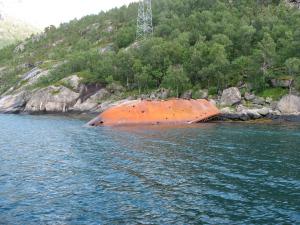
It was then that I stumbled upon it. It was an old concrete snow shed buried within the trees: exactly what I was looking for and exactly where I needed it. Even though I knew I’d almost certainly miss the boat and have to spend the night in the mountains on my own I stopped and took photos, poking around inside and excitedly jotting down everything I saw. In the novel it is exactly as I found it: the two rooms, the debris inside, the tiny side window. Nothing about it has been changed. I couldn’t believe my luck.
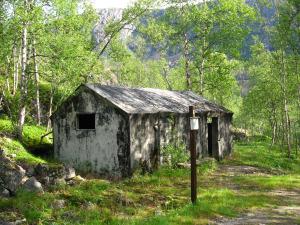
Thank you for sharing this wonderful story, Jason. I love the way chance discoveries can be so important in the shaping of fiction.
IN BRIEF: My View of The Dynamite Room
With an intriguing and dramatic title and an exceptionally beautiful cover, The Dynamite Room promises a lot but delivers on every count. The Second World War continues to provide enduring inspiration for storytelling across all media but this debut novel really stands out with its different take and strong premise of a German soldier holding an eleven-year-old British girl hostage in her own deserted home. (The last WW2 book to make this kind of impression on me was The Book Thief by Markus Zuzak and that was nearly ten years ago). I enjoyed the elegance of the writing which is superbly evocative of period and place. However, as is so often the case, a deeply engaging story is primarily driven not by events but by character and the complex and shifting dynamics between Heider and Lydia pulled me in with a skillful balance of compassion, insight and menace. With Jason’s background perhaps it’s not surprising that his novel has a strong cinematographic feel – it would make a stunning film.
*POSTSCRIPT*
Coincidentally my friend Jane Rusbridge, author of The Devil’s Music and Rook, is featuring a monthly Piece on Place on her blog and recently invited me to take part. So here you can read my version of Writers on Location!

